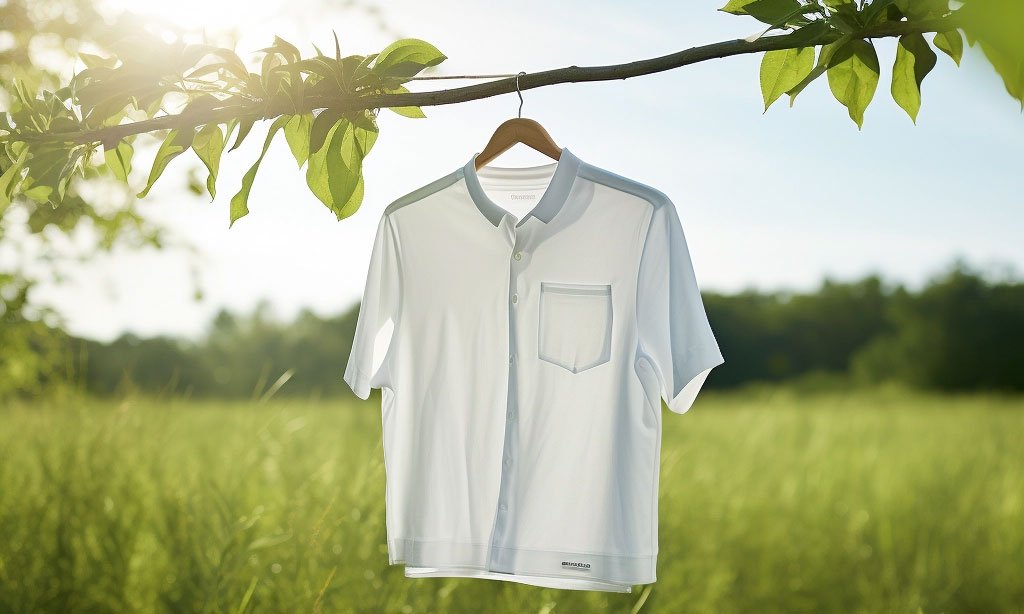Introduction
The fashion industry is undergoing a transformative shift towards sustainability, driven by increasing awareness of environmental and social issues. As we look towards the future, several trends and innovations are set to redefine the landscape of sustainable fashion. Sustainable Weave is at the forefront of this movement, committed to producing ethically manufactured apparel from recycled and organic materials. This blog post explores key trends, technological advancements, consumer behavior shifts, regulatory changes, and the challenges and opportunities that lie ahead.
Emerging Trends in Sustainable Fashion
Recycled Fabrics
Recycled fabrics are gaining traction as a cornerstone of sustainable fashion. The Global Recycled Standard (GRS) reported a 20% increase in the use of recycled fibers recently, reflecting the industry’s move towards circular fashion. Brands are increasingly adopting fabrics made from post-consumer plastic bottles, textile waste, and other recycled materials to reduce environmental impact.
Eco-Friendly Dyes
Traditional dyeing processes are notorious for their environmental footprint, consuming vast amounts of water and releasing harmful chemicals. However, innovations in eco-friendly dyes are changing the game. Natural dyes derived from plants and minerals, along with waterless dyeing technologies, are becoming more prevalent. According to the Textile Exchange, the market for eco-friendly dyes is projected to grow by 8% annually through the coming years.
Zero-Waste Design
Zero-waste design aims to eliminate textile waste by using every part of the fabric in the production process. Designers are embracing techniques such as pattern efficiency, modular design, and upcycling. A study by the Ellen MacArthur Foundation found that zero-waste practices could save the fashion industry $500 billion annually by reducing waste and resource consumption.
“Embracing sustainability in fashion isn’t just a trend—it’s a necessity for our planet’s future. At Sustainable Weave, we are committed to leading the charge towards a more ethical and eco-friendly industry.”
Technological Innovations
Smart Manufacturing
Technology is playing a pivotal role in advancing sustainable practices. Smart manufacturing processes, such as 3D knitting and digital printing, allow for precise control over material usage and waste reduction. The adoption of AI and IoT in production facilities is enhancing efficiency and transparency, enabling real-time monitoring of environmental impact.
Fabric Production Advancements
Innovations in fabric production are leading to the development of sustainable alternatives to conventional materials. Bio-based fabrics, such as mushroom leather and lab-grown silk, are emerging as viable options. These materials offer the dual benefits of reducing reliance on animal products and minimizing environmental harm.
Consumer Behavior Shifts
Consumers are increasingly prioritizing sustainability in their purchasing decisions. A survey by McKinsey & Company revealed that 67% of consumers consider the use of sustainable materials an important factor when buying apparel. Additionally, the demand for transparency is rising, with 73% of consumers willing to pay more for products that provide a full disclosure of their supply chain.
What Consumers Are Looking For
Consumers are not only seeking sustainable materials but also looking for brands that align with their values. Ethical labor practices, carbon footprint reduction, and long-lasting quality are top priorities. Brands that can effectively communicate their commitment to these principles are likely to gain a competitive edge.
Regulatory and Certification Landscape
Important Certifications
Certifications such as the Recycled Claim Standard (RCS) and Global Organic Textile Standard (GOTS) are crucial in establishing credibility and trust. These certifications ensure that products meet stringent environmental and social criteria. The number of GOTS-certified facilities increased by 14% recently, indicating a growing commitment to sustainable practices.
Regulatory Changes
Governments are implementing stricter regulations to promote sustainability in the fashion industry. The European Union’s Circular Economy Action Plan mandates that all textile products sold in the EU must be durable, repairable, and recyclable by 2030. Such regulations are driving brands to adopt more sustainable practices and innovate their product offerings.
Challenges and Opportunities
Challenges
Despite the progress, several challenges remain. High production costs, limited availability of sustainable materials, and the complexity of transforming supply chains are significant hurdles. Additionally, greenwashing—where companies falsely claim sustainability—poses a threat to genuine efforts.
Opportunities
However, these challenges present opportunities for growth and innovation. Investments in sustainable technologies and materials are expected to yield long-term cost savings and environmental benefits. Collaborations across the supply chain can lead to the development of new solutions and best practices. Brands that lead in sustainability are likely to enjoy enhanced reputation and customer loyalty.
Conclusion
As the fashion industry moves towards a more sustainable future, staying informed about emerging trends and innovations is crucial. Sustainable Weave is dedicated to leading the charge by producing high-quality, ethically manufactured apparel. By embracing sustainable practices, we can collectively create a positive impact on the environment and society.
Call to Action
We invite you to subscribe to our blog for more insights and updates on sustainable fashion. Follow Sustainable Weave on social media and LinkedIn to engage with our community and stay informed about the latest developments in the industry.
By staying informed and committed, we can pave the way for a more sustainable and ethical fashion industry. Together, we can make a difference.


